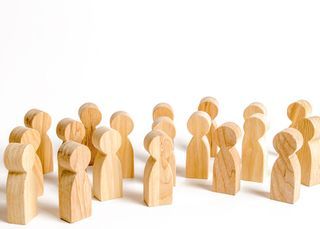Russia population 2023
# Russia's Population in 2023: A Demographic Overview
 |
| According to the 2021 census (excluding Crimea), Russia had a population of 144.7 million|credit:cdn.worlddata. |
Russia, the largest country in the world by land area, is not only known for its vast landscapes but also for its diverse and dynamic population. As of 2023, Russia's population stands at an estimated 144,444,359 people, making it one of the most populous nations globally. In this article, we will delve into the demographics, trends, and challenges associated with Russia's population in 2023.
## Demographic Composition:
Russia's population is characterized by its ethnic diversity. While Russians make up the majority of the population, there are also numerous ethnic minorities, including Tatars, Ukrainians, Bashkirs, and Chuvash, among others. This diversity contributes to the rich cultural tapestry of the nation.
The capital city, Moscow, and the cultural hub, St. Petersburg, are the most densely populated areas in the country. These urban centers are not only magnets for domestic migrants but also attract people from other countries, adding to the cosmopolitan nature of these cities.
 |
| credit: Bloomberg |
## Population Trends:
Over the years, Russia has experienced various demographic trends that have shaped its population landscape. One notable trend is a slow but steady population decline. The country's population has been gradually decreasing, with a negative growth rate. This trend is attributed to several factors, including low birth rates and high mortality rates.
### Birth Rates and Fertility:
Russia's birth rate has been below replacement level for several years. This means that, on average, Russian women are having fewer children than what is needed to maintain the current population size. Government initiatives and incentives have been introduced to encourage families to have more children, but the impact has been limited.
Year Fertility Rate Growth Rate
2023 1.825 0.050%
2022 1.824 0.050%
2021 1.823 0.000%
### Mortality Rates:
High mortality rates, especially among working-age men, have been a significant challenge. Factors contributing to this issue include alcoholism, tobacco use, and a lack of access to quality healthcare in some regions. Addressing these health-related challenges is crucial to reversing the population decline.
### Migration:
Migration also plays a role in shaping Russia's population. The country has historically been a destination for migrants, including labor migrants from neighboring countries. However, in recent years, there has been a shift, with more Russians leaving the country for better economic opportunities abroad.
Year Net Migration Rate Growth Rate
2023 0.621 ‑16.980%
2022 0.748 ‑14.420%
2021 0.874 ‑12.690%
## Regional Disparities:
Russia's population is not evenly distributed across its vast territory. The western part of the country, including Moscow and St. Petersburg, is more densely populated, while the eastern regions, such as Siberia and the Far East, have much lower population densities. This geographic disparity presents unique challenges in terms of infrastructure development, healthcare access, and economic opportunities.
## Aging Population:
Like many developed nations, Russia is grappling with an aging population. The median age is increasing as the proportion of elderly citizens grows. This demographic shift places additional strain on healthcare and pension systems, requiring long-term planning and reforms to ensure the well-being of the elderly population.
## Government Initiatives:
The Russian government recognizes the demographic challenges it faces and has implemented various policies and initiatives to address them. These include financial incentives for families to have more children, improvements in healthcare infrastructure, and efforts to attract Russian expatriates back to the country. However, reversing population decline is a complex and long-term process that requires a multifaceted approach.
## Conclusion:
In 2023, Russia's population stands at approximately 144 million people, with notable demographic challenges such as a declining population, aging citizens, and regional disparities. While the government has taken steps to address these issues, the solutions are not straightforward. Encouraging higher birth rates, reducing mortality rates, and managing migration effectively are all critical components of any comprehensive strategy to sustain and grow the population.
As Russia navigates these demographic challenges, it must also consider the broader social and economic implications. A healthy and growing population is essential for a nation's prosperity and long-term sustainability. The success of Russia's efforts to address its demographic issues will have far-reaching consequences for the country's future.

Post a Comment